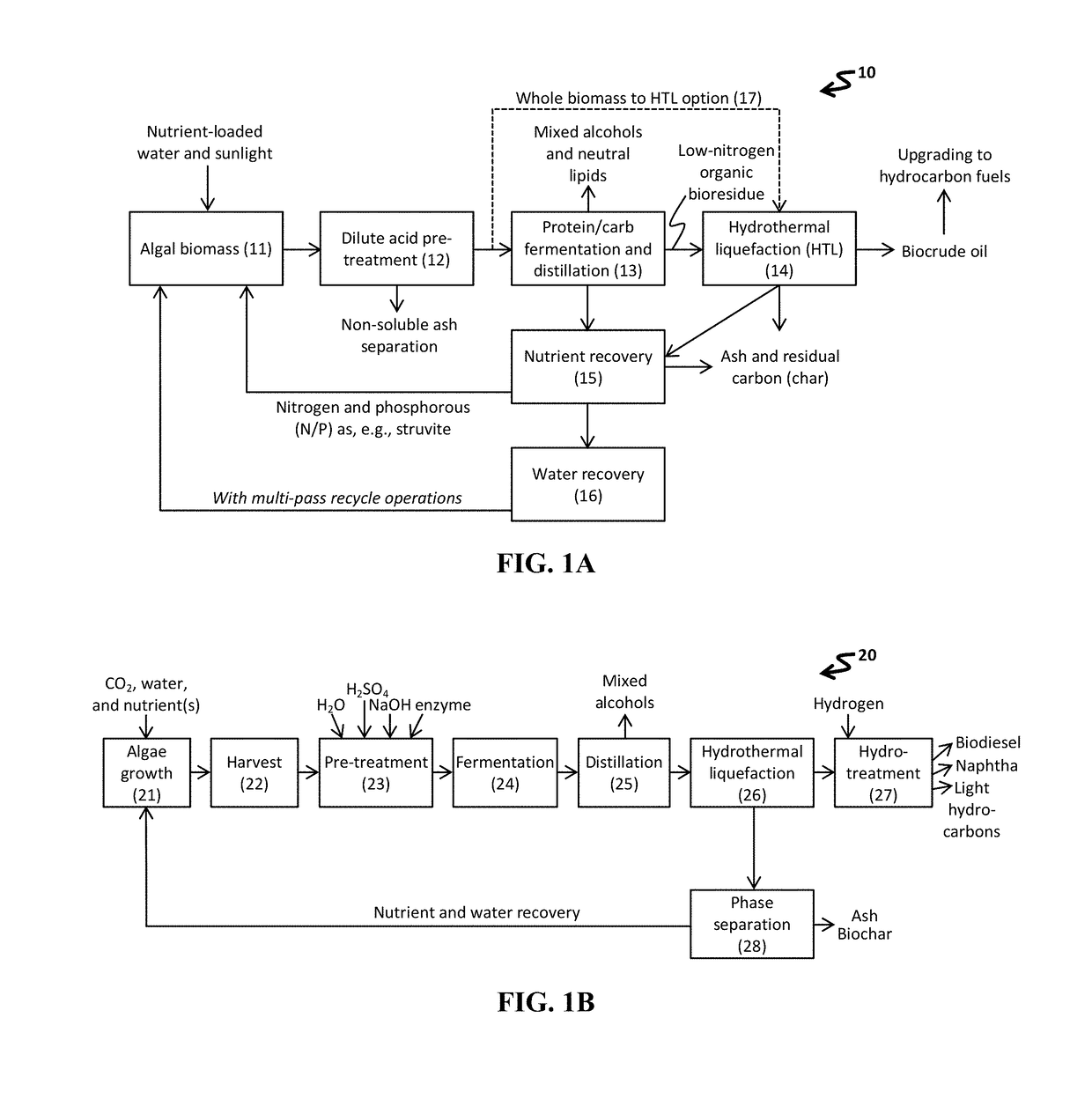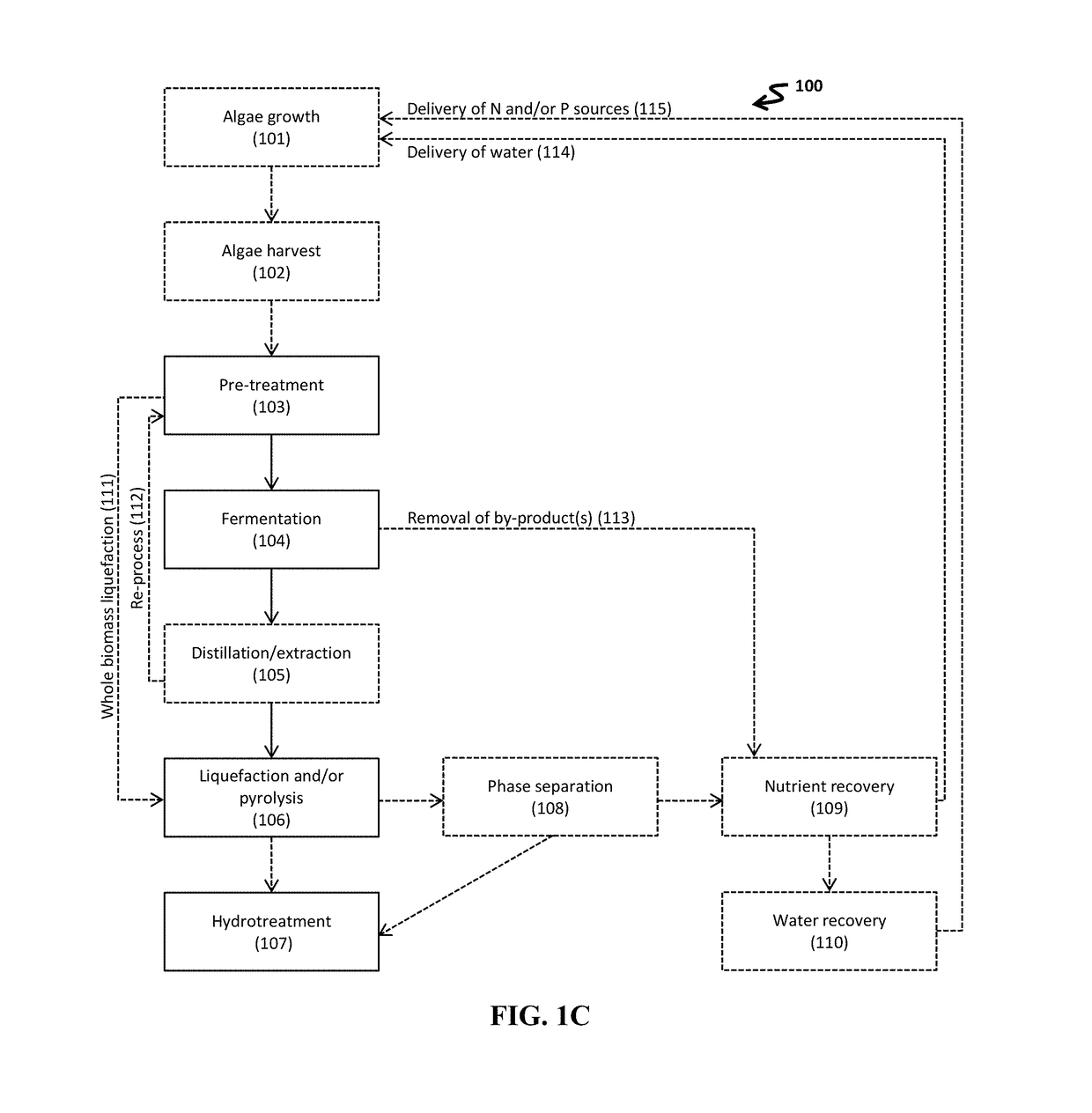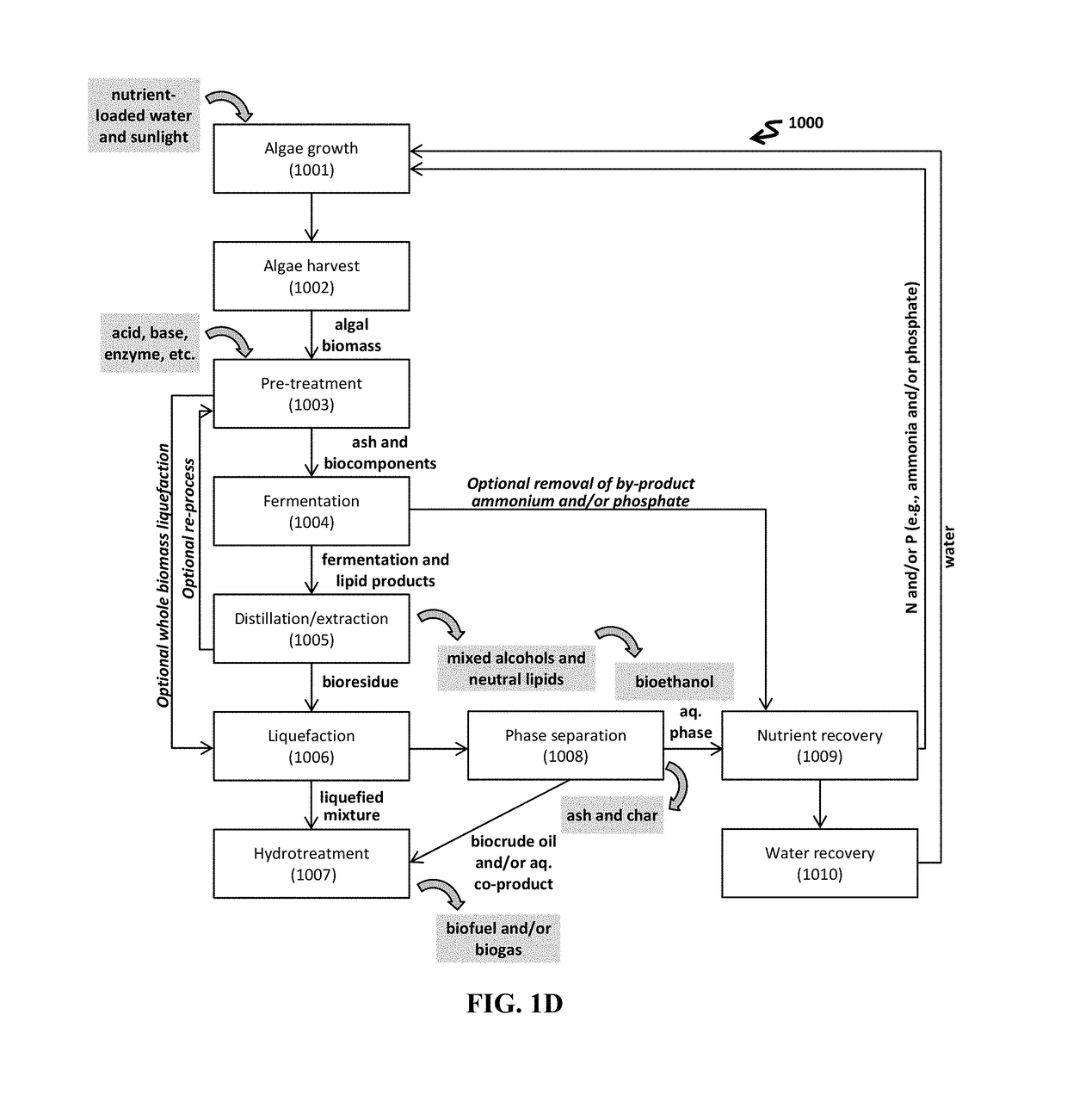Tandem biochemical and thermochemical conversion of algal biomass
a technology of biochemical and thermochemical conversion and algal biomass, which is applied in the direction of biofuels, fermentation, etc., can solve the problems of limited progress of fermentation reaction, and achieve the effect of saving energy
- Summary
- Abstract
- Description
- Claims
- Application Information
AI Technical Summary
Benefits of technology
Problems solved by technology
Method used
Image
Examples
example 1
f to Fuel-Production of Biofuels from Chemical, Biochemical, and Thermochemical Processing and Conversion of Benthic Polyculture Biomass Produced by Algal Turf Cultivation
[0105]Turf algal biomass for fuels offers significant benefits over raceway monoculture systems. For instance, turf algal biomass generally includes a polyculture of different algae, thereby increasing the resilience of the biomass from crashes due to environment stresses and promoting robust algae production. In addition, growth is maximized, while costly addition of nutrients and CO2 is minimized. Finally, expensive harvesting and dewatering of the biomass can be minimized or even avoided. For instance, simple mechanical harvesting can provide a biomass with 8% to more than 15% solids content within the wet biomass.
[0106]In one instance, the purpose of this invention is high efficiency conversion of wet (e.g., 5-10% solids) algae biomass into fuel intermediates that are suitable for downstream refining using the ...
example 2
ment and Ash Removal from Algal Biomass
[0109]The basic chemical profile of microalgae—roughly equal ratios of lipids, proteins, and polysaccharides (carbohydrates)—requires that the value of the biomass be optimized by making use of all of the algal biocomponents. These biocomponents can become renewable sources for biofuels, bioethanol, and other by-products. One hurdle lies in converting the cellular material into a form suitable for fuels production. This conversion requires rupturing the algal cell walls for releasing the lipids, and breaking down the protein and polysaccharide fractions to generate a viable medium for fermentative conversion.
[0110]Algal biomass can be treated to expose its biocomponents. For instance, such treatments can include pre-treatment (e.g., with dilute acid hydrolysis, strong acid hydrolysis, and / or enzymatic hydrolysis) and fermentation (e.g., with one or more bacteria, including mutant forms thereof). Pre-treatment generally led to the formation of i...
example 3
bic Fermentation of Algal Biomass Residuals for Mixed Alcohol Production
[0114]Algal biomass is composed of roughly equal fractions of lipids, carbohydrates, and proteins. The protein content is significantly higher than most terrestrial and multicellular organisms, and protein compositional variation is low. The conversion of carbohydrates and proteins to alcohols shows promise for increasing biofuel yields with significant potential for side benefits, including boosting octane and reducing particulate emissions by way of fuel blending. In addition, the conversion of proteins to amino acids can lead to new avenues for producing biofuels, industrial chemicals, and pharmaceuticals.
[0115]After pre-treatment, fermentation with bacteria was employed to further process sugars, proteins, amino acids, and carbohydrates into simpler compounds, such as alcohols and amino-compounds, such as ammonium. Fermentation conditions included use of metabolically engineered E. coli strains, such as thos...
PUM
| Property | Measurement | Unit |
|---|---|---|
| temperature | aaaaa | aaaaa |
| time period | aaaaa | aaaaa |
| time period | aaaaa | aaaaa |
Abstract
Description
Claims
Application Information
 Login to View More
Login to View More - R&D
- Intellectual Property
- Life Sciences
- Materials
- Tech Scout
- Unparalleled Data Quality
- Higher Quality Content
- 60% Fewer Hallucinations
Browse by: Latest US Patents, China's latest patents, Technical Efficacy Thesaurus, Application Domain, Technology Topic, Popular Technical Reports.
© 2025 PatSnap. All rights reserved.Legal|Privacy policy|Modern Slavery Act Transparency Statement|Sitemap|About US| Contact US: help@patsnap.com



